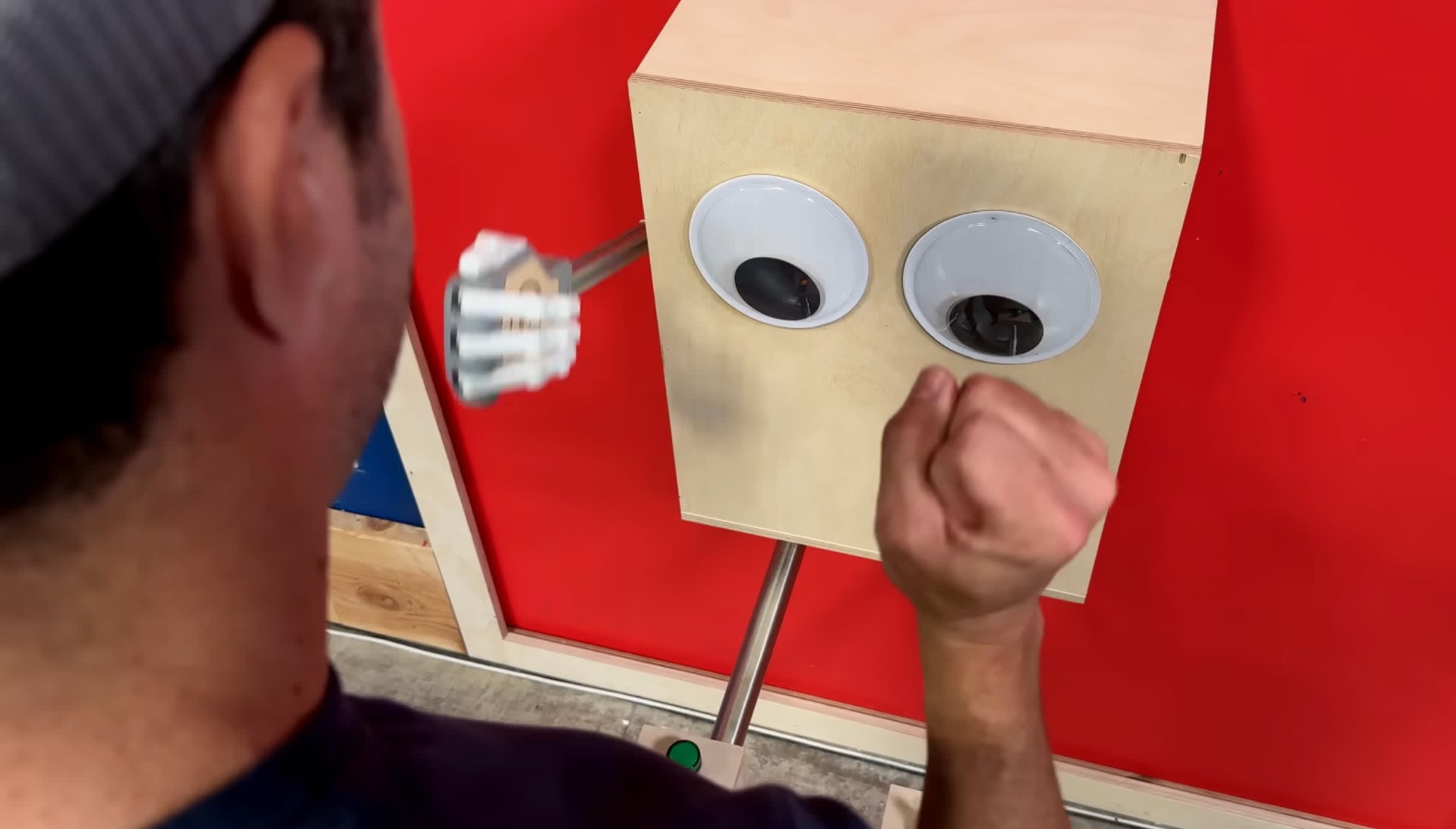In a nutshell: Computers have been beating humans at games for a long while. OpenAI got its start with bots that could beat professional Starcraft players. Now, one engineer has built an unbeatable robot at Roshambo – commonly known as Rock-Paper-Scissors.
YouTuber and former NASA engineer Mark Rober has created an unbeatable robot opponent that will shatter your confidence in the classic rock-paper-scissors game. Dubbed "Rocky," the robot is outwardly just a simple box with googly eyes and a 3D-printed hand, so how good could it be?
Impossibly good! Rober excitedly shows off the bot's capabilities in a recent video. Rober could not win a single round against the robot in his demo. Rober claims that the chances of beating Rocky are "zero percent."

The key to Rocky's dominance is a blisteringly fast hand-tracking system. An infrared motion sensor tracks the movement of your hand and fingers a hundred times per second. This data gets fed into a mini-computer buried inside Rocky's body, which uses algorithms to determine whether you're throwing rock, paper, or scissors split seconds before you've fully extended your hand. Once it knows your throw, the computer directs Rocky's robotic hand via servo motors to make the perfect counter move.
Even tricks proven to increase your odds of winning don't work. Researchers studied over 54,000 rock-paper-scissors games and discovered a strategy that increases your odds of winning to 75 percent. The study said that if you win a round, switch to the next item in the cycle for the following round (rock to paper). If you lose, go to the previous item (rock to scissors).
"Now, as for beating Rocky, sadly, regardless of your strategy, your chances are much, much lower. As in 0%," claimed Rober.
No strategy can overcome the system's mechanics. Since Rocky only throws after opponents begin their move, there is physically no way to win. Rober is so confident in the hand-tracking system that he put up a $10,000 prize to anyone who can beat Rocky fair and square.
One can argue that the bot is basically "cheating" by closely watching how your hand moves right before you throw your sign. It does this quickly enough to appear seamless, as if the bot is reading your mind. In the video, it did seem to change its "mind" in one round, switching its move from paper to scissors mid-swing. The bottom line is Rocky is a lot faster at reading hand gestures and making predictions accordingly--faster than a human could ever be.

It's worth mentioning that Rocky isn't the first robot of its kind. In 2013, the Ishikawa Group Laboratory in Tokyo, Japan, developed a similar robot called Janken, which also claimed a 100-percent success rate using similar high-speed tracking technology.
